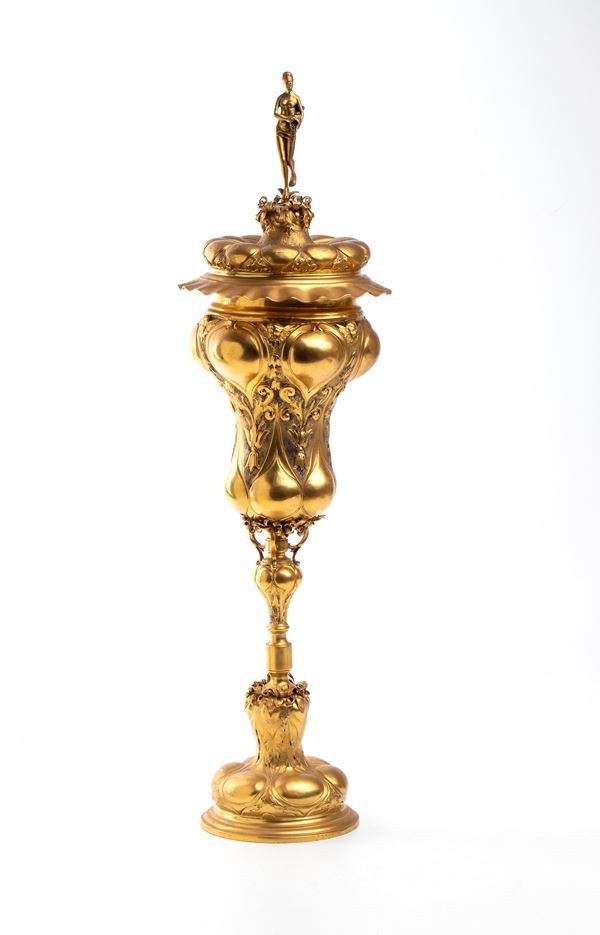251
Gilt-silver German lidded cup, late 19th century
Height x width x depth: 45 x 13 x 13 cm. Weight: 634 g.
circular base decorated with plant elements alternating with ovules and a stem with a high knot supporting a similarly decorated flared cup. The lid is surmounted by a socket depicting a blindfolded woman with a cornucopia in her hands. This type of cup is stylistically reminiscent of the cups made in Nuremberg and other German cities in earlier times.
The blindfolded woman is commonly associated with Fortune, an allegorical personification representing chance or fate. The blindfold symbolises the impartiality and unpredictability of fortune, which can act without warning or preference. The cornucopia, or ‘horn of plenty’, on the other hand, is an ancient symbol of prosperity, abundance and wealth, often linked to a generous gift from fortune or nature. Allegorical symbols were widely used in arts and crafts, and this depiction could be interpreted as a wish for good fortune and abundance.
Hallmarked at the base with the 900/1000 silver hallmarks in use in Germany after 1880 and fully hallmarked with the import marks used in London in 1897-98, importer Edwin Thompson Bryant.
The blindfolded woman is commonly associated with Fortune, an allegorical personification representing chance or fate. The blindfold symbolises the impartiality and unpredictability of fortune, which can act without warning or preference. The cornucopia, or ‘horn of plenty’, on the other hand, is an ancient symbol of prosperity, abundance and wealth, often linked to a generous gift from fortune or nature. Allegorical symbols were widely used in arts and crafts, and this depiction could be interpreted as a wish for good fortune and abundance.
Hallmarked at the base with the 900/1000 silver hallmarks in use in Germany after 1880 and fully hallmarked with the import marks used in London in 1897-98, importer Edwin Thompson Bryant.
Live auction 327
Curiosities from European and Oriental Art
Curiosities from European and Oriental Art
Silvers, Ivories, Corals, Icons and Wunderkammer
Palazzo Caetani Lovatelli, tue 25 February 2025
FIRST SESSION
25/02/2025 Hours 12:00 pm
Lots 1/167
SECOND SESSION
25/02/2025 Hours 04:00 pm
Lots 168/346










